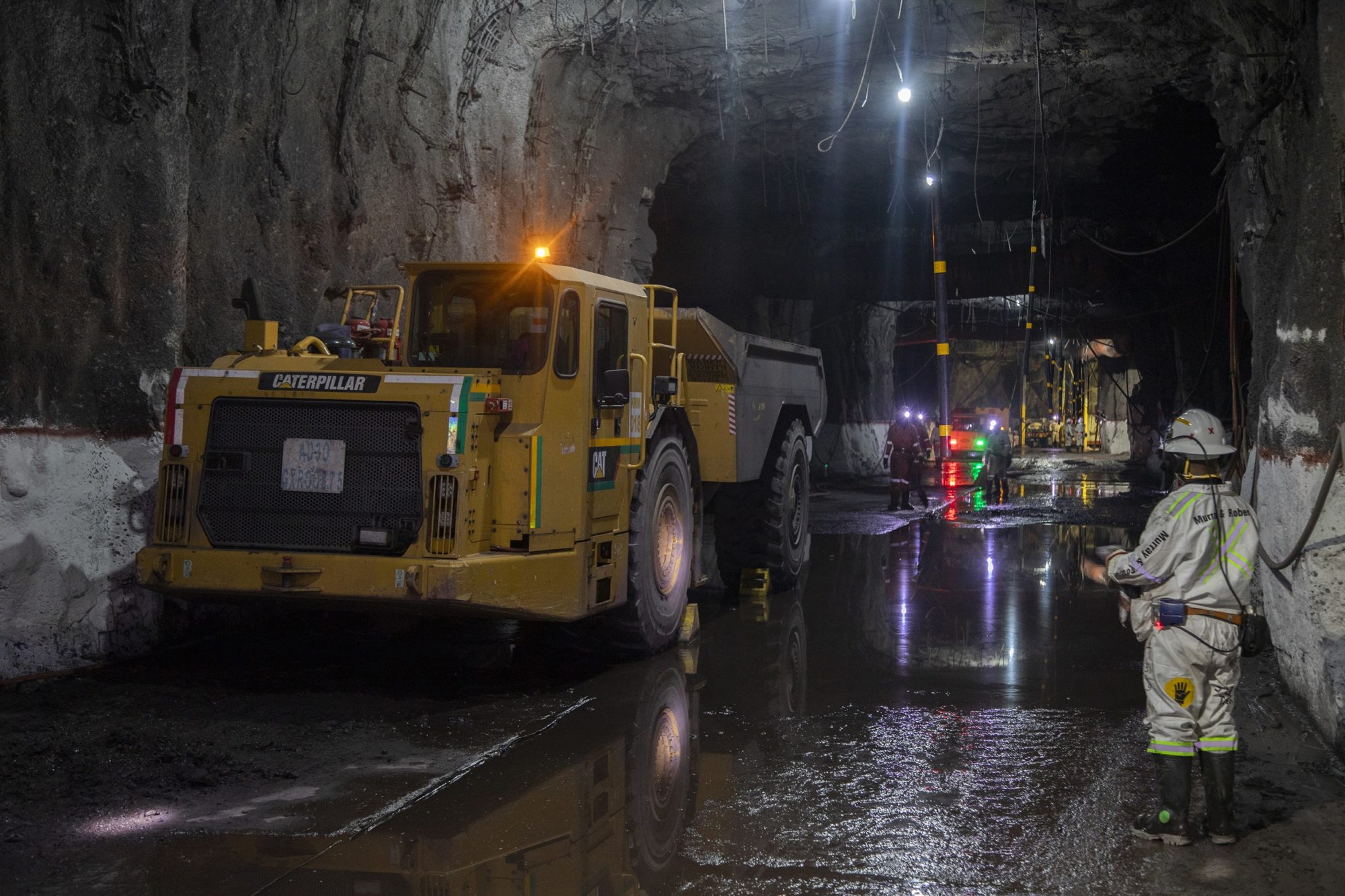Murray & Roberts Cementation reports that work is well underway on its contract at Kalagadi manganese mine in the Northern Cape, South Africa. This leading underground mining contractor, who formed a joint venture with BCM Underground Mining, is tasked with building up production to the shaft system’s nameplate capacity within the first 18 months of the five-year contract. Thereafter the scope is to operate the mine for the balance of the contract term.
During this time Murray & Roberts Cementation will transfer the necessary skills to grow BCM as an underground mining contractor; this is in line with the company’s commitment to continuing transformation. BCM Underground Mining, a 100% black-owned business, has solid relationships with stakeholders in the region.
Kalagadi mine, owned by The project is owned by Kalagadi Manganese (Pty) Ltd, a company that is held by ArcelorMittal (50%), Kalahari Resources (40%) and IDC (10%), is situated northwest of Hotazel on three farms which overlay an estimated 960 Mt of manganese ore. The mine has been designed to produce 3 Mt/y of manganese ore at a grade between 36 and 38%. The mining method used will be room and pillar.
Otto Fourie, Project Executive at Murray & Roberts Cementation says that as a new mining operation and one of this magnitude it was essential to put worldclass systems in place to ensure not only the future success of the operation but also optimum safety within the operating environment. Just as important, he adds, is ensuring that the correct quality of product is mined and delivered to the plant.
Processes and procedures were implemented in accordance with base line risks assessments conducted that took all factors into account. Significantly, Murray & Roberts Cementation has extensive experience on full turnkey projects like this and was well positioned to ensure appropriate best practice systems were put in place.
The mine is a two-shaft system with a main man/material shaft and a separate ventilation shaft. The main shaft with a nine metre diameter will reach a working level of 281 m and a loading level of 317 m. The ventilation shaft is to a depth of 323 m and is of 6,7 m diameter.
Included in the development phase, which is well underway, is the completion of the required underground infrastructure that will support the ramp up and sustainable production at the mine into the future. This will include conveyors systems, crushers, settlers and workshops as well as the sliping of silo number 1 to ensure it has the requisite throughput capacity and the sliping of the RAW to Level 261 which will facilitate access to the second tipping area.
“What is also significant is that we had a good project start up and are well ahead of the contractual program,” Fourie says. “This can be attributed to the level of planning and scheduling that forms part of our operating strategy on such projects. Adding to this are the extremely experienced and competent crews working on this project.”
Fourie says that as a fully mechanised operation, the correct deployment of skilled competent operators is key to the success of the project. “This has a direct impact not only on the production capability but also on the safe operation of the mine.”
There are currently two crews in place and this will be increased in a phased manner to ensure that appropriate resources are in place for the ramp up in October 2018. The project will eventually have 12 development crews; each with their own primary suite of equipment including a drill rig, a roof bolter, an LHD and trucks with the necessary secondary equipment.
All the equipment being used on the project has been capitalised and will be mobilised by Murray & Roberts Cementation.
Murray & Roberts Cementation has embarked on a process of identifying local businesses through its Enterprise Development program that will be able to supply goods and services to the project. Fourie says attention is to develop these SMMEs to become sustainable businesses. A current example is where local taxi organisations have been contracted to transport personnel to and from site.
Another major differentiator that Murray & Roberts Cementation brings to the project is the level of training provided to its employees through its own fully-fledged training academy in Carletonville. Crews allocated to the Kalagadi manganese mine either have or are undergoing refresher training to ensure competencies.
In addition to this, there is the potential to set up a satellite training facility at the mine itself and this will be used to train Murray & Roberts Cementation personnel on site and to provide basic training skills to communities in the project vicinity.











